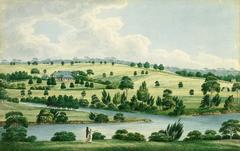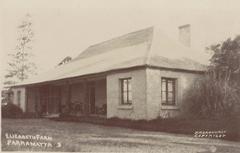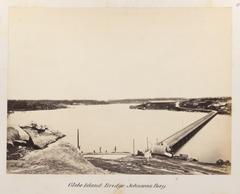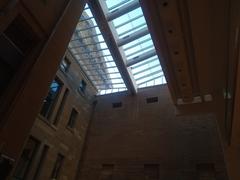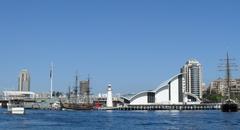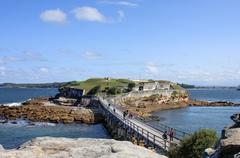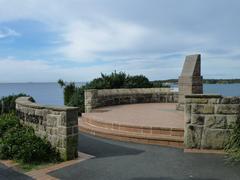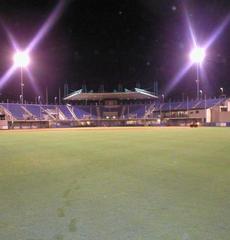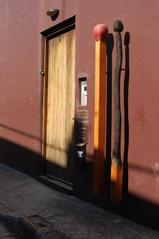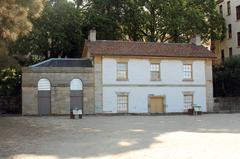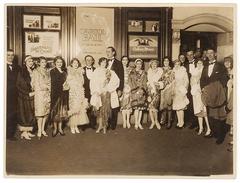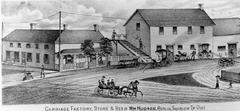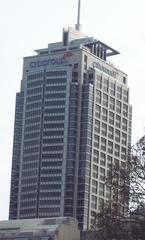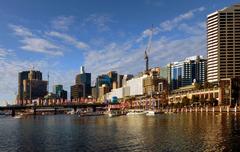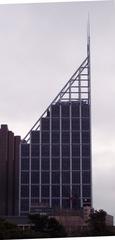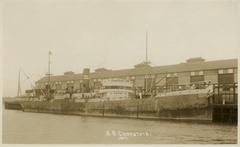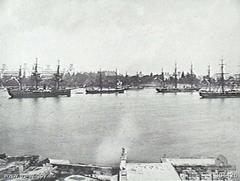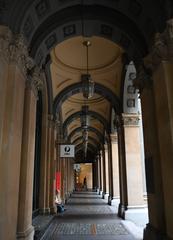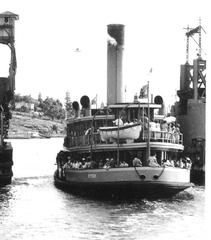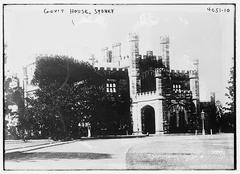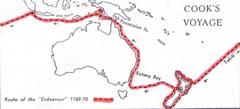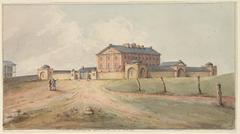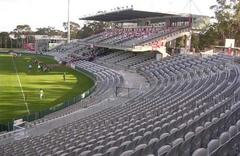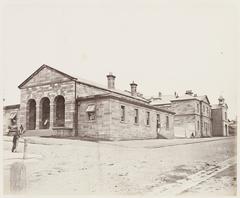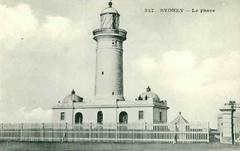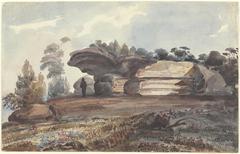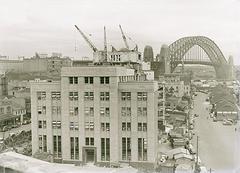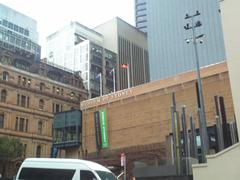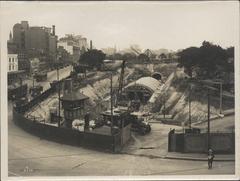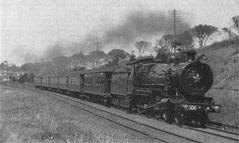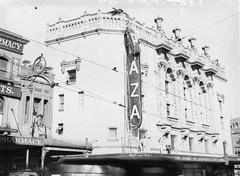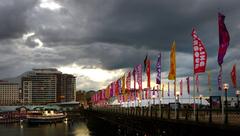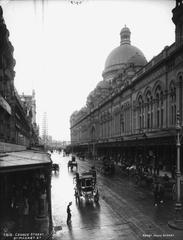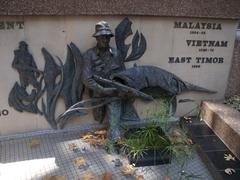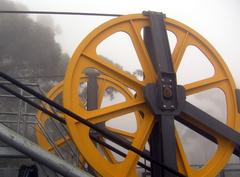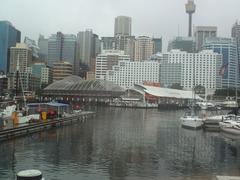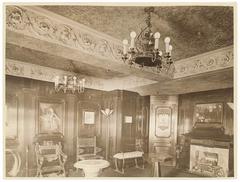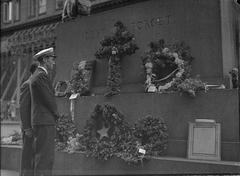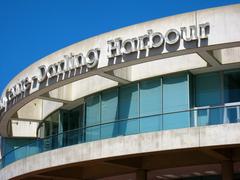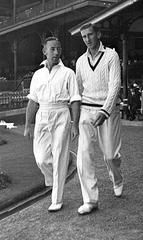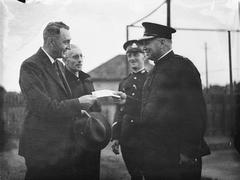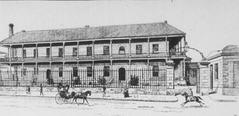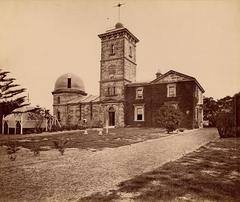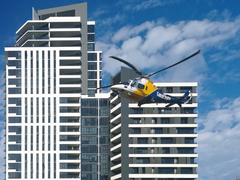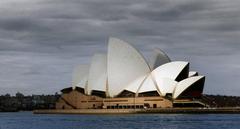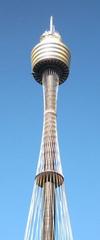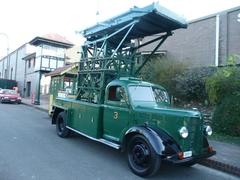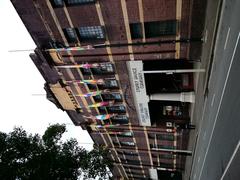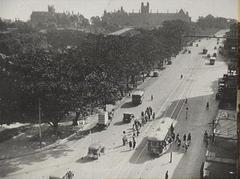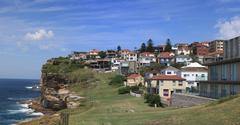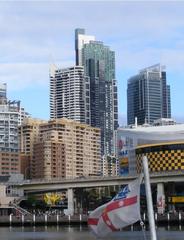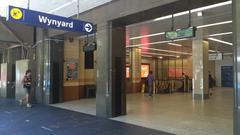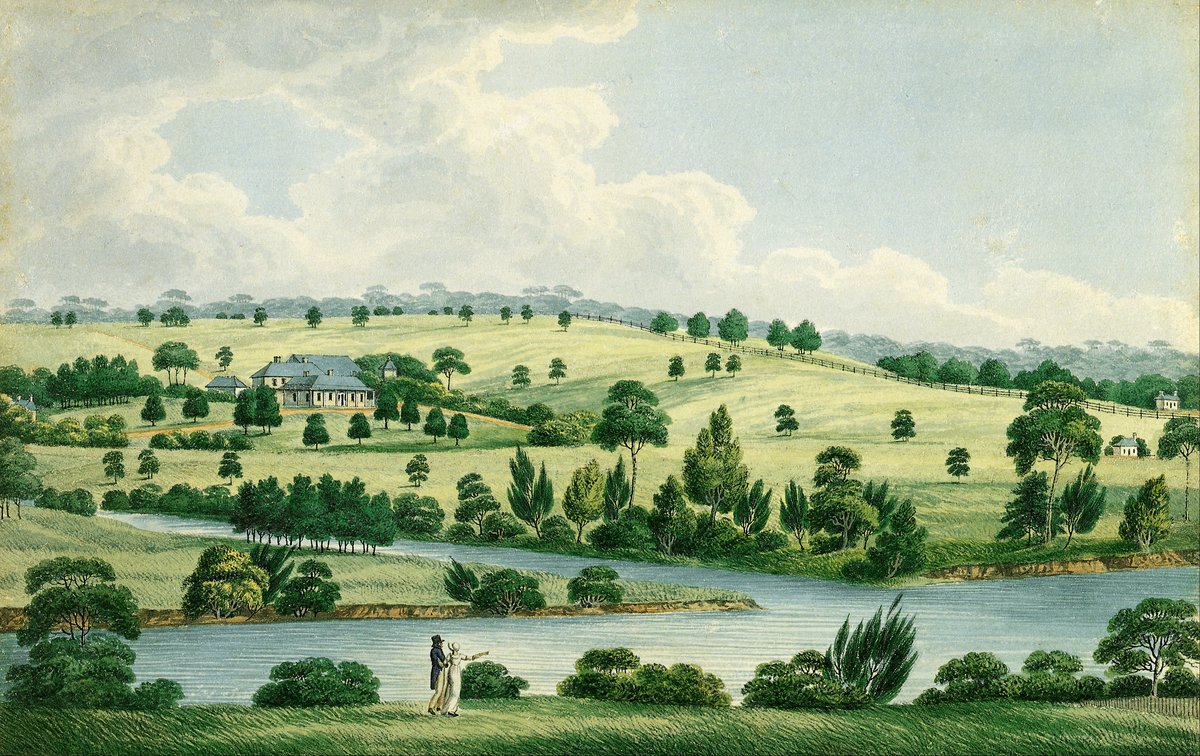
Elizabeth Farm Visiting Hours, Tickets & Historical Significance in Sydney, Australia
Date: 15/06/2025
Introduction
Elizabeth Farm is one of Sydney’s most significant colonial heritage sites, providing an immersive window into Australia’s early European settlement, architecture, and agricultural history. Established in 1793 by John and Elizabeth Macarthur in Parramatta, this historic homestead is recognized as the birthplace of the Australian Merino wool industry—an industry that became a cornerstone of the nation’s economy and identity. Beyond its agricultural legacy, Elizabeth Farm stands as a testament to the architectural evolution of early Australia, the influential Macarthur family, and the intertwined histories of settlers and Indigenous Australians. This comprehensive guide details Elizabeth Farm visiting hours, ticketing, accessibility, and essential visitor information to ensure a rich and educational experience at this iconic Sydney site (Elizabeth Farm Official Site; WhichMuseum; At Parramatta; Secrets Sydney).
Table of Contents
- Introduction
- Historical Overview
- Architectural Features and Evolution
- Visiting Information
- Visitor Experience
- Nearby Attractions and Suggested Itineraries
- Tips for Visitors
- Frequently Asked Questions (FAQ)
- Conclusion and Next Steps
- References
Historical Overview
Early Colonial Foundations and the Macarthur Legacy
Established in 1793, Elizabeth Farm was built by John Macarthur, a British Army officer, and his wife, Elizabeth. Granted 100 acres in Parramatta, the Macarthurs quickly became key figures in shaping the agricultural and social landscape of early New South Wales. Elizabeth Farm was named in honor of Elizabeth Macarthur, who managed the estate during John’s frequent absences and played a pivotal role in its success and the growth of the Merino wool industry (Belgenny Farm Agricultural Timeline).
The Birthplace of the Australian Wool Industry
Elizabeth Farm is celebrated as the cradle of the Australian Merino wool industry. The Macarthurs imported Merino sheep in the 1790s, with Elizabeth Macarthur’s management between 1809 and 1817 key to the industry’s survival and expansion. By 1807, the farm had exported its first bale of wool to England, establishing a trade that would transform the colony’s economy (Good Meat: Australian Farming Through History).
Indigenous Context and Early Encounters
Before European settlement, the area was home to the Burramattagal people of the Darug nation. The arrival of settlers and transformation of the land at Elizabeth Farm reflect broader themes of dispossession and cultural change, which are acknowledged in the museum’s interpretive programs.
Architectural Features and Evolution
Elizabeth Farm stands as a prime example of colonial Georgian architecture, adapted to the Australian environment. The original single-story brick cottage, constructed by convict labor, featured symmetry and restrained ornamentation typical of the Georgian style (Parra News; MHNSW). Over time, the house was expanded with wide verandahs, French doors, and elegant interiors. Practical innovations—like lowering floors to raise ceilings—highlight the adaptation of British design to local conditions.
Inside, rooms are arranged around a central hallway, and many furnishings have been carefully recreated or preserved, offering insight into the Macarthurs’ lifestyle (MHNSW). Volunteers continue to enrich the experience by handcrafting soft furnishings.
The gardens, integral to the estate, feature kitchen plots, orchards, and ornamental plantings that reflect both European traditions and adaptations to the Australian climate (WhichMuseum).
Visiting Information
Visiting Hours
- Regular Hours: Fridays and Saturdays, 10:00 am to 4:00 pm.
- NSW School Holidays: Open daily, 10:00 am to 4:00 pm.
- Closed: Good Friday and Christmas Day.
- Check for updates: Visiting hours may change for special events; always confirm on the official website.
Tickets and Admission
- General Admission: Free for all visitors, including adults, children, and concession holders (my.mhnsw.au).
- Group Bookings: Required for groups of 20 or more; must be arranged in advance via phone or email.
- Members: Museums of History NSW members enjoy exclusive benefits, including discounts and special experiences.
Accessibility
- Wheelchair Access: Most areas are accessible, with ramps and accessible restrooms. Some historic areas (cellars, upper floors) may have limited access due to the building’s age.
- Assistance: Visitors with mobility needs are encouraged to contact the site ahead of time for support.
Getting There
- Address: 70 Alice Street, Rosehill (Parramatta), NSW 2142, Australia
- By Train: Parramatta Station is a 10–15 minute walk away.
- By Bus: Several local bus routes stop nearby.
- By Ferry: Parramatta Ferry Wharf is within walking distance.
- By Car: Limited on-site and nearby street parking available (Sydney Point; Tourist Places).
Visitor Experience
Guided Tours and Activities
- Self-Guided Visits: Explore the house and grounds at your own pace, with interpretive panels and hands-on exhibits (WhichMuseum).
- Guided Tours: Free guided tours are available on request, offering expert insights into the Macarthur family, the house’s evolution, and colonial life (MHNSW).
- Hands-On Activities: Visitors are encouraged to touch and use replica furnishings, sit on verandah chairs, play the piano, and read copies of historical letters (What’s On Sydney).
- Children’s Programs: Activities for younger visitors include exploring the gardens, feeding chickens, and engaging with interactive displays (mysydneydetour.com).
- Special Exhibitions: Occasional art installations and community engagement events are held, such as “Healing land, remembering Country” (atparramatta.com).
Gardens and Grounds
Elizabeth Farm’s gardens are a highlight, featuring recreated 1830s pleasure grounds, orchards, and plantings that reflect the estate’s agricultural history (Secrets Sydney). Visitors can enjoy tranquil walks, picnic areas, and a playground for families.
Facilities and Amenities
- Restrooms: Modern amenities, including accessible toilets and baby-changing facilities.
- Tearoom: Refreshments available during special events; visitors may bring their own food and enjoy the gardens.
- Gift Shop: Books and souvenirs about the Macarthur family and Australian history.
- Seating: Provided throughout the house and gardens for relaxation.
Nearby Attractions and Suggested Itineraries
Combine your visit with other Parramatta historical sites for a deeper exploration of Sydney’s colonial heritage:
- Hambledon Cottage: Formerly part of the Elizabeth Farm estate, now a house museum (trek.zone).
- Experiment Farm Cottage: Site of James Ruse’s pioneering farm.
- Old Government House: Major colonial-era attraction in Parramatta Park.
- Lancer Barracks: Australia’s oldest operational military facility.
- Westfield Parramatta: Shopping and dining options nearby.
These attractions can be combined into half-day or full-day itineraries (atparramatta.com).
Tips for Visitors
- Check current visiting hours before your trip, especially during holidays or special events (mhnsw.au).
- Book in advance for group tours or guided activities.
- Dress comfortably for walking on historic and garden paths.
- Photography is permitted for personal use (no flash).
- Respect the heritage site by not eating or drinking in historic interiors.
- Engage with staff and volunteers—their expertise can enrich your visit.
Frequently Asked Questions (FAQ)
Q: Is admission free?
A: Yes, general admission is free for all visitors.
Q: What are the current opening hours?
A: Fridays and Saturdays, 10:00 am–4:00 pm; daily during NSW school holidays.
Q: Are guided tours available?
A: Yes, free tours are offered on request.
Q: Is the site accessible for visitors with mobility needs?
A: Most areas are accessible, but some historic sections have limitations.
Q: Can I bring children?
A: Yes—Elizabeth Farm offers family-friendly activities and facilities.
Q: Are pets allowed?
A: Only assistance animals are permitted.
Conclusion and Next Steps
Elizabeth Farm is a cornerstone of Australia’s colonial heritage, offering a vibrant and engaging visitor experience that combines history, architecture, and interactive learning in a beautifully preserved setting. With free general admission, accessible facilities, and enriching programs for all ages, it is a must-visit destination for anyone interested in Australia’s early history. Extend your exploration with nearby Parramatta heritage sites and stay updated via the Museums of History NSW website and the Audiala app, which provides audio tours, maps, and event alerts.
References
- Elizabeth Farm Official Site
- WhichMuseum
- At Parramatta
- Secrets Sydney
- Sydney Point
- Tourist Places
- Parra News
- MHNSW
- Good Meat: Australian Farming Through History
- trek.zone
- mysydneydetour.com
- What’s On Sydney
